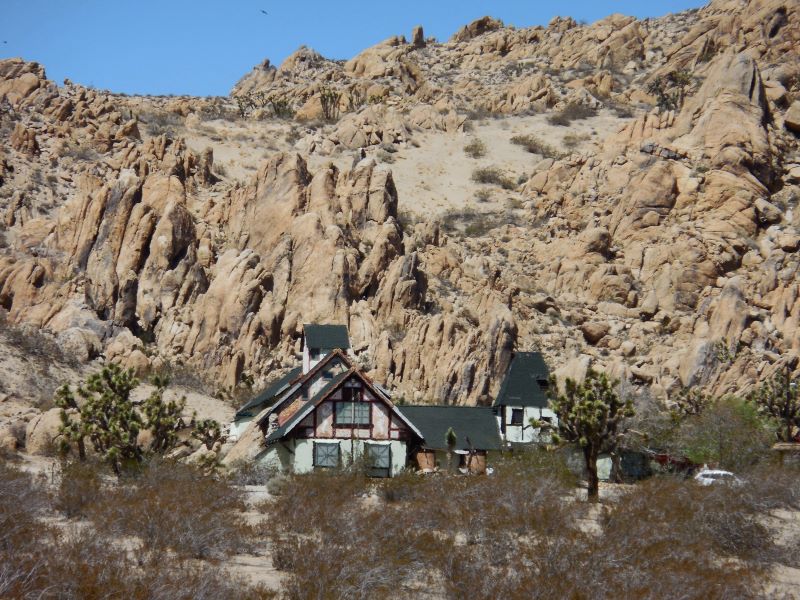
A desert experience doesn’t always require one to crawl on hands and knees through the thornbush and cactus, regardless of what Edward Abbey says. Anyone seeking cactus, sandstone, and volcanic peaks need look no farther than our own Santa Monica Mountains. We have two native cacti and an abundance of sandstone and volcanic outcroppings—check out Topanga’s own Red Rock Canyon Park or Circle X Ranch. For an adventure a little further afield, but not so long a drive as Death Valley, Joshua Tree, or Moab, there are plenty of options to explore off the 14 freeway—still within Los Angeles County but a world away.
Saddleback Butte, located between Lancaster and Edwards in the Antelope Valley is one of our favorite places for a desert retreat.
Created in 1960 in an effort to protect key Joshua tree woodland habitat, this state park encompasses 2,955 acres (4.6 square miles) of Mojave desert, including the eponymous Saddleback Butte, which rises 3,651 feet from the desert floor and dominates the skyline for miles.
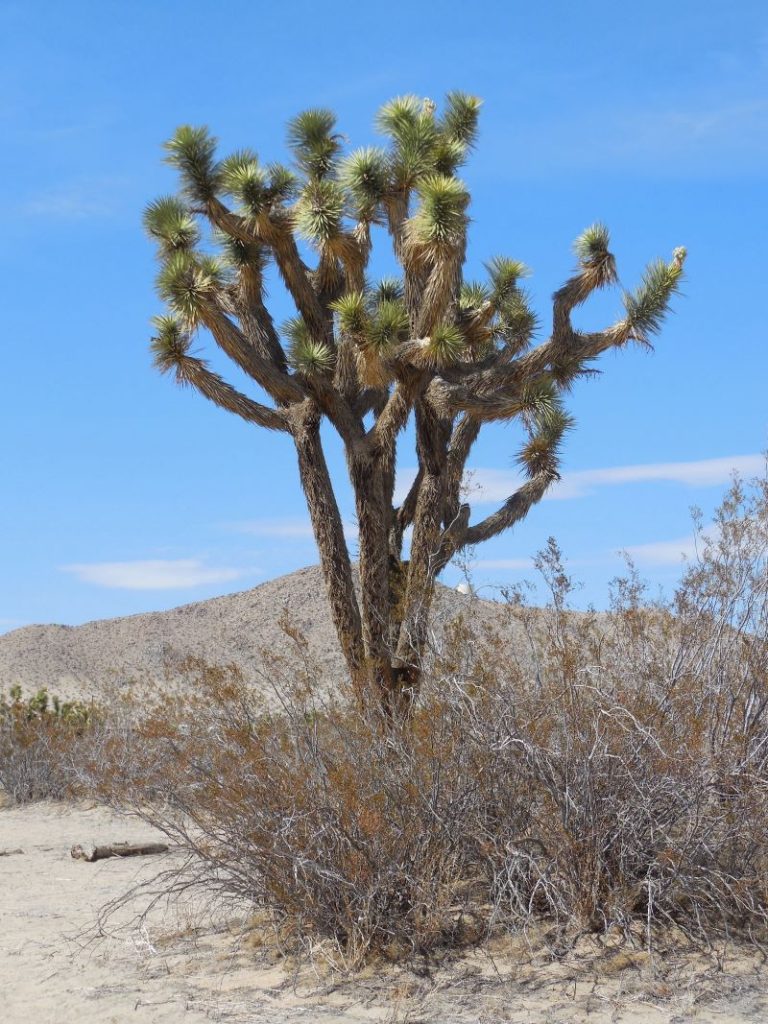
This park features a first-come-first-served campground with 37 sites. Most sites have a ramada to provide shade and a wind block—necessary for a place that offers little natural shade. There’s potable water and restrooms, picnic tables for day visitors, and a variety of trails, including a pleasant, three-mile loop, through acres of rugged Mojave desert terrain, well furnished with granite boulders Joshua trees, and creosote brush—Proof that one has arrived in the Mojave. “If you have any doubt about it, know that the desert begins with the creosote,” says Mary Hunter Austin in her book Land of Little Rain. The view from here stretches for miles—enough solitude for almost anyone—and at night the stars are bright and the city seems far away.
In a good year, Saddleback Butte can be beautiful wildflowers in the spring. In a dry year, the landscape is parched and barren, but the views are still beautiful. Right now it’s just too hot to enjoy a trip to this part of the world, but cooler weather is just weeks away. The best times to visit are February through May and late September through early November. Visit www.parks.ca.gov/?page_id=618
Saddleback Butte is an ideal day trip, but it also makes a good base for a more ambitious Antelope Valley weekend, which could include a trip to Tomo-Kahni State Historic Park in the Tehachapi Mountains. Tomo-Kahni offers a fascinating look at the cultural heritage of the Kawaiisu people, including beautifully preserved rock art, but is a logistical challenge for visitors from the coast, because the only way to see it is on a docent led tour, and the tours start at 8:30 a.m.
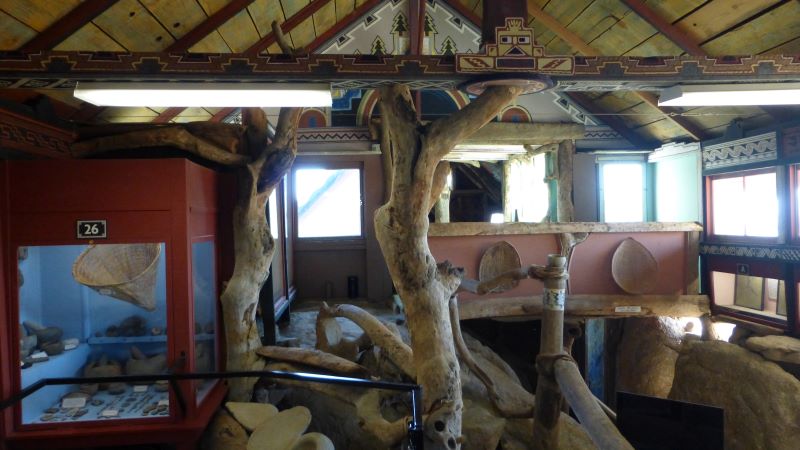
Saddleback Butte is one of several volcanic buttes rising above the alluvial floor of the desert. There’s another park with a dramatic rock formation not far away: Piute Butte, which is part of Antelope Valley Indian Museum Historic Park. The museum is the madly eccentric work of H. Arden Edwards, a homesteader, self-taught artist, and archeology enthusiast, who built the chalet-style building into the side of the butte in 1928 as a house but also as a home for his collection of Native American artifacts.
Edwards later sold the house to anthropology enthusiast Grace Wilcox Oliver, who turned it into a museum in 1932. Oliver sold the property, which included the butte behind the museum, to State Parks in 1979. The building that houses the museum is listed on the National Register of Historic Places. The butte, for thousands of years a landmark and a sacred place, has been designated a sacred landscape by the Native American Heritage Commission.
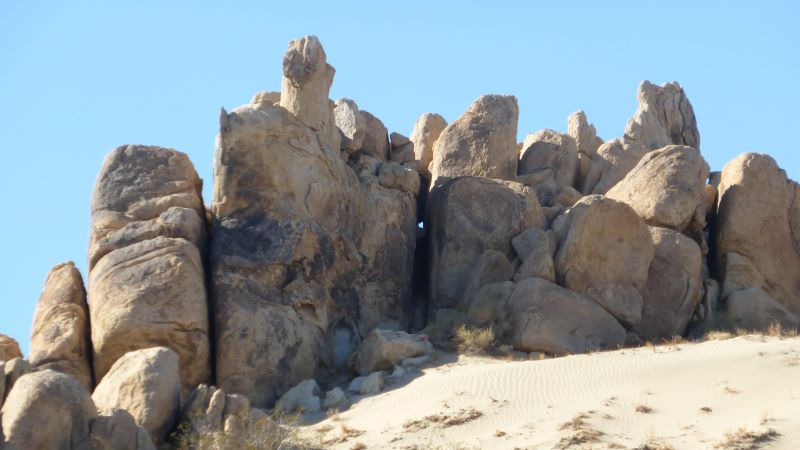
The museum houses an extensive collection of artifacts and offers classes and events, including an easy, half-mile trail offers dramatic views of the butte, but the rocks themselves are off limits because of the sacred nature of the site.
This park hosts an annual American Indian Celebration on the third weekend of October every year, featuring a traditional ground blessing ceremony, American Indian traditional dancing and music, Indian artists demonstrating and selling their work, Navajo tacos, and special activities for children. www.parks.ca.gov/?page_id=632
For a different type of desert ecosystem, check out small but beautiful Arthur B. Ripley Desert Woodland Park, just outside of Lancaster. This remnant of pristine Joshua tree and juniper woodland preserves 556 acres of the type of habitat that once spread for miles across the valley floor. It’s beautiful, especially in the spring. www.parks.ca.gov/?page_id=634
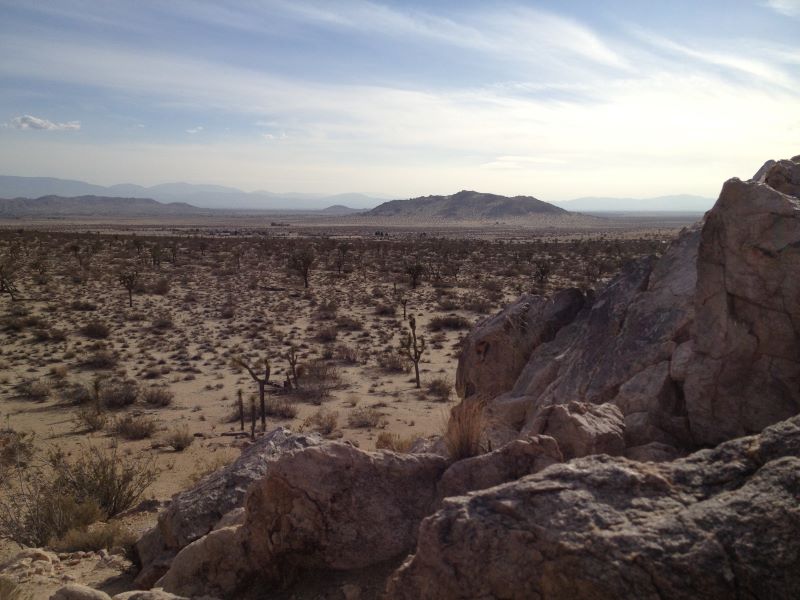
The Antelope Valley is two hours away from Topanga on a good traffic day, but it is still a real desert, part of the vast Mojave, and the even more expansive Great Basin, despite the mundane and increasingly sprawling presence of Palmdale and Lancaster. Travel here is a serious business. Be prepared. Waiting until the autumn weather arrives before heading out for a desert adventure is a good idea. Heat illness can kill. Stay on the road—those “soft shoulders” signs aren’t advertising skin cream. Going off road can result in getting stuck in soft sand. Cars in the desert were one of Edward Abbey’s major grievances, and he was right. Vehicles are deadly for native plants and animals, including the desert tortoise, which is rapidly headed for extinction.
Bring extra water—lots of it. A phone charger and an extra battery pack are essential, too. Anyone planning to walk or hike should bring socks and hiking shoes—thorns, sharp volcanic rocks, stinging and biting insects, and the highly venomous Mojave Green rattlesnake are all potential trail hazards. A hat, sunscreen, and a jacket are essential, too. Always tell someone where you are going. The Mojave is a big place, and it’s easier to find someone who is lost if the searchers know where to start looking.
Patience and curiosity are important things to bring, too. Some trips reward the traveler with ephemeral desert flowers or the sight of rare desert wildlife, others offer only an empty expanse of sky. Either way, the desert has the power to draw one back.




